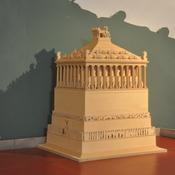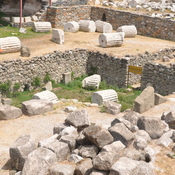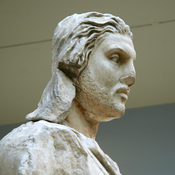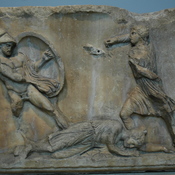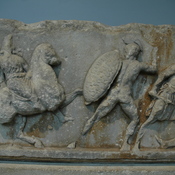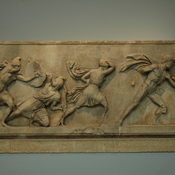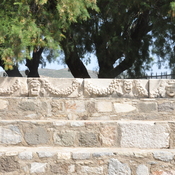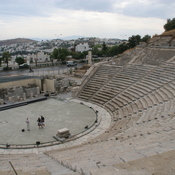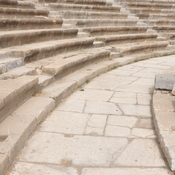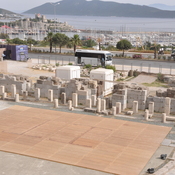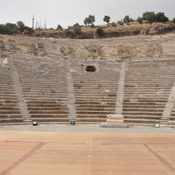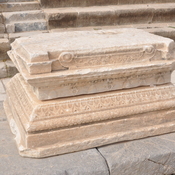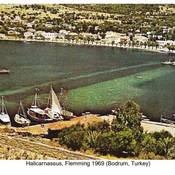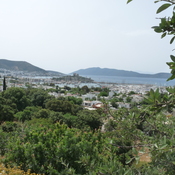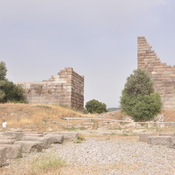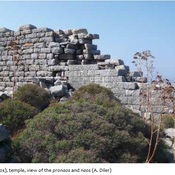Modern Bodrum, harbour city in Caria. Zephyria was the original name of the settlement, and the present site of the great Castle of St. Peter built by the Knights of Rhodes in 1404 AD. Originally Zephyria covered the land of island Step by step expanded to include several Carian settlements on the mainland. First was Salmacis, an older town of the native Leleges and Carians. The first colonists were Dorians from the Troezen1.In the early fourth century Halicarnassus came ander the control of Hecatomnos the satrap of Caria. After his oldest son Mausolos moved his residence from Mylas to Halicarnassos. He is famous for the Mausoleum, one of the seven wonders of the ancient world. The Hekatomnid dynasty ruled Halicarnassus in the 4th century BC until 334 BC when Alexander the Great entered Caria in 334 BC.
The historian Herodotus was born in Halicarnassus.
The site is now occupied in part by the modern town; but the ancient walls can still be traced round nearly all their circuit, and the position of several of the temples, the theatre, and other public buildings can be fixed with certainty.2
See:
- G. E. Bean, J. M. Cook and W. H. P.. “The Halicarnassus Peninsula.” The Annual of the British School at Athens, vol. 50, 1955, pp. 85–171, http://www.jstor.org/stable/30104444. Accessed 9 May 2022.
- Pausanias Description of Greece with an English Translation by W.H.S. Jones, Litt.D., and H.A. Ormerod, M.A., Cambridge, MA, Harvard University Press; London, William Heinemann Ltd. 1918.
- G. E. Bean, J. M. Cook and W. H. P.. “The Halicarnassus Peninsula.” The Annual of the British School at Athens, vol. 50, 1955, pp. 85–171, http://www.jstor.org/stable/30104444. Accessed 9 May 2022.


